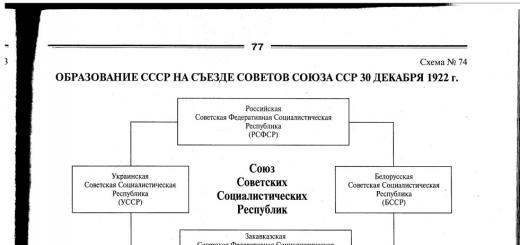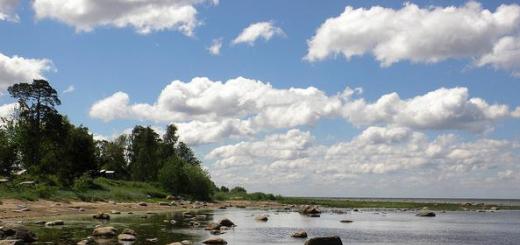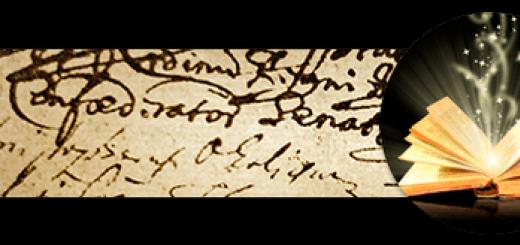Alexander Nevsky Bridge - the longest drawbridge across the Neva in St. Petersburg
Length Alexander Nevsky bridge without coastal structures - 629 m, together with ramps - 905.7 m. The bridge connects Alexander Nevsky Square and Zanevsky Prospekt.

Until 2004, when the Bolshoi Obukhovsky Bridge was opened, it was the longest bridge in the city: the length without coastal structures was 629 m, along with ramps - 905.7 m. The width was 35 m. reinforced concrete, with prestressed reinforcement.

The structure uses guys - steel cables with a diameter of 70 mm, pulling together individual parts of the bridge. 25-meter wings spread in just two minutes. The two-winged drawbridge is located in the center. The distributing drive is hydraulic, for the first time used on drawbridges in the city.

In 1959, the project of engineers A. S. Evdonin, K. P. Kolchkov and G. M. Stepanov won the competition. The bridge was built in 1960-1965, the bridge was tested using a column of army tanks. November 5, 1965 the bridge was commissioned. With the construction of the bridge, Alexander Nevsky Square also took on its present form, there were warehouses here from time immemorial, and the place itself was notorious among the townspeople.
However, during the construction, mistakes were made in technology. The waterproofing was worn out over time, the steel strained ropes actively corroded. By 1967, 56 cables had burst, leaving only trolleybus traffic across the bridge. Due to the mismanagement of the city authorities, the bridge continued to collapse until 1982, when a 700-ton counterweight of the left wing fell into the water. Bridge of Alexander Nevsky was closed, ferry service was established. Subsequently, traffic on the bridge was restored, but key structural defects were not eliminated.

In 2000-2001 the reconstruction of the bridge was carried out according to the project of engineer A. A. Zhurdin under the guidance of engineer V. G. Pavlov.

In 2002, a cosmetic repair of the crossing was carried out.

Panorama Alexander Nevsky bridge
Until 2004, the Alexander Nevsky Bridge was the longest in St. Petersburg. It stretches across the Neva and connects the city center, namely the end of Nevsky Prospekt. with the river region. The total length of the bridge is 906 m, the width is 35 m.
Story
A place for the construction of a bridge in the continuation of Nevsky Prospekt was provided even before the Great Patriotic War. But construction began only in 1959, when a group of architects and engineers headed by Alexander Evdonin won a competition for the implementation of a construction project with the working title "Staro-Nevsky Bridge".

The construction of the bridge lasted 5 years. In the winter of 1963, an ice shift occurred on the Neva, which provoked a large-scale accident - part of the floating system of 20 pontoons was torn off and floated downstream. There were people and a construction crane on the platforms, the upper part of which hit the edge of the Bolsheokhtinsky bridge, slowing down the movement of the structure along the river. People from the pontoons were evacuated thanks to the efforts of firefighters who arrived on time.

On May 15, 1965, the bridge was almost completed and received the official name in honor of the commander Alexander Nevsky. The opening took place in November of the same year: the first test of the reliability of the structures took place on November 1, and on November 5 the bridge was put into operation.

In 1967, due to mistakes made during construction, the waterproofing was critically worn out, and 56 cables supporting the structure burst. The bridge was closed to traffic, leaving only tram traffic. Until 1982, repairs were not carried out, but after the collapse of the 17-ton part of the left drawbridge on the water, it was completely closed, and a ferry service was established across the Neva.

A few years later, the bridge was reopened to traffic, but a full-fledged reconstruction was carried out only in 2000-2002: 12 m of steel ropes were replaced, waterproofing was established, and cosmetic repairs were carried out. Later, for the anniversary of the city, lighting was equipped with 760 LED spotlights.
Alexander Nevsky Bridge today
The Alexander Nevsky Bridge is a structure of 7 spans, 5 of which are located above the river, and 2 along the banks. The adjustable central span is made of metal and reaches a length of 50 m. The wings are bred in 2 minutes using a hydraulic mechanism.

Separate parts of the bridge are pulled together by guys - steel cables 7 cm thick each, passed through technological holes in metal elements. The tension of the cables can be adjusted depending on the weather conditions: in cold weather, loosen it, and in warm weather, tighten it harder.

The capacity of the Alexander Nevsky Bridge: 3 car flows in one direction, 3 in the other, 2 tram lines and 2 sidewalks for pedestrians on the sides. Despite the width of 35 m, traffic jams form on the bridge during peak hours. Residents of the city are advised to use the metro at this time. Middle span breeding time: from 2:20 to 5:10 am.


Through the Bolshaya Neva, connects Alexander Nevsky Square, which ends Nevsky Prospekt, and Zanevsky Prospekt; Central and Krasnogvardeisky districts.
The length of the bridge is 629 m, together with coastal structures - 905.7 m. The width is 35 m, the width of the carriageway is 27 m.
Reinforced concrete, seven-span, guys are used in the construction.
Names: Staro-Nevsky (under construction), Alexander Nevsky - in honor of the great Russian commander and the name of the Alexander Nevsky Lavra and the square in front of it.
The crossing at this point of the Neva was planned back in the 30s of the last century, but then it was not possible to implement such a grandiose plan. By the end of the 1950s, massive housing construction began on the right bank of the Neva. Leningrad, already rebuilt after the war, grew rapidly in breadth. Residential quarters appeared on Okhta. The design of new areas was in full swing on the site of the Petrovsky powder warehouses, in the area of Piskarevka, Polyustrovo, Rzhevka.
On the right bank, a trapezoidal Chelyuskintsev Square appeared (now it is an unnamed space between the houses of the “Stalinist” building, along which transport highways are laid). On the left - the square in front of the Alexander Nevsky Lavra, where they began to demolish old residential buildings and ugly grain storage - a legacy of a bygone era.  Instead, they decided to build a hotel "Moscow" here.
Instead, they decided to build a hotel "Moscow" here.
A new bridge across the Neva was urgently needed for Leningrad to solve transport problems. The city authorities called the construction of the crossing "an urban planning task of particular importance."
1959 - a special commission summarizes the results of the competition. Unlike the traditional Soviet practice, when the construction of the bridge was entrusted to only one organization, this time the Leningrad City Executive Committee announced a closed competition. The most famous Leningrad and Moscow organizations participated in the creative competition. Some projects turned out to be too expensive, others offered structures that did not fit into the existing development, and others were questionable from a technical point of view. As a result, the jury did not award the first prize to anyone, just as in the story with the Peter the Great (Bolsheokhtinsky) bridge, and the second place, in the unanimous opinion, was awarded to the work of Lengiprotransmost. The same institute was entrusted with the subsequent stages of designing the Alexander Nevsky Bridge. Let's name the authors of the project: chief engineer A. S. Evdonin, engineers K. P. Klochkov and G. M. Stepanov, architects A. V. Zhuk, S. G. Maiofis, Yu. I. Sinitsa.
It was a new word in bridge building; many of the ideas of the designers of the Alexander Nevsky bridge will then be further developed. Until recently, the bridge remained the longest in Leningrad - St. Petersburg. And only the new cable-stayed bridge, which was called the Bolshoi Obukhovsky, intercepted the palm (the length of the main span is 382 m, and the total length is 2824 m). But the Alexander Nevsky Bridge is still the champion among drawbridges!

The bridge consists of seven spans, five of which are located above the water, two - above the embankments. The central span, 50 meters long, is movable. Two of its wings, which are set in motion by means of a hydraulic drive, rise in just two minutes.
What new technologies were used in the construction of the bridge?
For the first time in the Soviet Union, they used guys - steel cables that connected the individual parts of the bridge. They were hidden by the construction - then the builders will take the guys out, paying tribute to the aesthetics of the new time (compare, for example, with the Bolshoi Obukhovsky Bridge). The cables of the Alexander Nevsky bridge have a diameter of only 70 mm and are made of alloy steel. Important: the tension of the cables is regulated depending on the ambient temperature: in cold weather, the tension is loosened, in the heat they are pulled up with special winches. Guys, together with electric cables, penetrate the entire bridge through special through openings.
For the first time, reinforced concrete shells for river supports were installed at a 35-meter (!) depth.
The design of the span structures was also unusual - in the form of an elongated letter V, which were placed on the river foundations. They were cast on the shore, and then installed above the water. By the way, the total weight of each structure is over five thousand tons.
And, finally, a rare case for the Union: the non-working space inside the ramps was properly used - for parking for 230 cars.

The bridge fits perfectly into the urban environment, due to the fact that the movement is arranged on top, so the crossing does not rise above the historical buildings on the left bank of the Neva. The construction turned out to be harmonious, proportional; very large parts of the bridge do not seem heavy. Experts note the clarity of its constructive scheme, laconicism, bordering on asceticism, and at the same time - restrained emotionality. In a word, it was the minimalism of the sixties.
On November 1, a column of heavy tanks passed over the bridge. The Alexander Nevsky Bridge passed this test with honor. And on November 5, car, tram and pedestrian traffic was opened at the crossing. The modern look of Alexander Nevsky Square has finally taken shape; however, the metro station "Alexander Nevsky Square" will open only two years later; and the Moskva Hotel will acquire its current appearance only in 1976.
However, almost immediately after the bridge was put into operation, problems began. Now it is customary to say that mistakes in technology were made during the construction. No, it would be more correct to say that in the Soviet Union at that time there were no good quality materials, that is, the production base lagged far behind advanced design ideas.
What happened?
The waterproofing of the supports was made of glass wool, and it began to gradually dissolve in bitumen.
The shrouds, lubricated with cannon oil, began to rust quickly, in addition, the quality of the steel was unsatisfactory. The commission found that 56 shrouds burst after two years.
The bridge continued to gradually collapse, while the load on it increased all the time. The authorities even closed the traffic of trams for some time. But for Leningraders who traveled every day from the sleeping areas to the center, it was very inconvenient. There were no metro stations on the right bank then.
And in 1982, due to the deterioration of the structure, one of the bridge's counterweights collapsed into the water. Its weight is 700 tons. The bridge was closed to traffic by ferry service. The crossing was hastily repaired, the counterweight replaced, and reopened to traffic. The people of Leningrad, as was customary at that time, were not explained anything.
From the history of the Alexander Nevsky Bridge
One of the bridge mechanics recalls:
“In 1982, I was on shift when a counterweight of several hundred tons fell into the water. After he fell, the phone turned off and all communication was lost, because this fool, falling, cut off all communications. I went down to the engine room to find out what happened, and I see: all the lines are stretched out like pasta towards the bridge, and oil is smearing everywhere ... There was no noise, no explosion. I feel that I need to report what happened, but I can’t: there is no phone, nothing. You need to go ashore and call.
Apparently, I had such a historical face at that moment that the taxi driver sat me down and took me to the phone, didn’t take money and didn’t even ask for anything. The people found out that a counterweight had fallen in Leningrad, they announced it on the Voice of America in the morning, and the locals, when the trams stopped running across the bridge…”
The bridge of Alexander Nevsky was completely reconstructed only in 2000
year. They changed 12 kilometers of steel cables, made new waterproofing, overhauled the adjustable and stationary parts of the crossing, and even the adjacent walls of the embankments. The work lasted almost a year and a half.
And, finally, in 2003, on the anniversary of St. Petersburg, the bridge shone: 500 powerful lamps and 8 spotlights were installed.
Do you want to look at the Alexander Nevsky Bridge from above? And see how it works inside? Please!
The Alexander Nevsky Bridge is the longest bridge in St. Petersburg from being drawn up. The total length is 905.7 meters, almost a kilometer. Only the Big Obukhovsky (Vantovy) bridge is longer.
By the way, the Alexander Nevsky bridge is also cable-stayed. Only here the guys (steel cables with a diameter of 70 mm) are inside the bridge structure and it is impossible to see them from the outside.
The bridge is seven-span, the central span 50 meters long is drawbridge. Five flights are located above the mirror of the river, and two extreme ones are above the embankments. Stationary side spans, including those above the embankments, are covered by two three-span continuous prestressed box-section structures with a curvilinear outline of the lower belt.
The central span of the bridge is a drawbridge span; it is made of metal. The 25-meter wings of the bridge are bred relatively quickly - in two minutes, the wiring drive is hydraulic.
1. On the right in the photo - the left bank of the Neva, and on the left - the right. Who said it would be easy?

2. The bridge rises not only over the Neva, but also over the embankments. The bridge ramps are 138 meters long.

3. The Alexander Nevsky Bridge connects the Central District and the Malaya Okhta Historical District, built up in the middle of the 20th century.

4. The bridge connects the two banks until 2:20 am in summer, and around the clock in winter. The survey of the bridge takes place at approximately 4:00 in the morning.

5. Adjustable is the central span, which consists of two parts - "wings" of 25 meters. Each wing is based on two pillars.

6. Team spbblog
as part of balu97
, annet_cl
, karelia_piter
in anticipation of a tour of the interior of the bridge.
Entrance through the booth. The booth is two-level: from above - a place for protection, from below - an entrance.

7. A very steep staircase leads down.

8. We go down lower and lower. This room is already under the bridge. A deafening roar is periodically heard from above - this is cars passing along the inter-span joints.

9. Control panel. It is located in one of the four pillars of the bridge, from here all processes are controlled.


11. Before you open the bridge, you need to make sure that the vehicular and pedestrian traffic is stopped, no one has broken through the fences. For this, there are radio communications and outdoor surveillance cameras.

12. Basically, all negotiations between mechanics and security are conducted via walkie-talkies, but such devices can be used as a backup connection.


14. Chief mechanic Anatoly Sergeevich gave us a very interesting, detailed tour, answered all questions and showed all the secret places. Anatoly Sergeevich came to work on the bridge immediately after the army, and he still works like that. A very soulful person.

15. While the bridge is not raised, we go down to look at the hydraulic cylinders.
Each of the four bridge supports contains two such cylinders. Only eight. Four for each of the two bridge wings. Not confused yet? Then on.
The hydraulic cylinders go down and pull the wing down. And since the wing itself is attached to the bridge supports, it rotates along the axis of attachment. Thus, the bridge is raised. To bring the bridge back, the hydraulic cylinders rise back and the whole process takes place in the opposite direction.

16. The diameter of the cylinder is not so big - a little thicker than a human hand.

17. We return to the control panel and exit to a cramped technical balcony. From here you can observe the bridge being drawn almost "from under the bridge itself".

18. On the railing, several spiders wove cobwebs. The place for them is fish, more precisely mosquito. Spider mechanics do not touch - something like a sign.

19. That very moment. 02:00.

20. Let's go!

21. Well, that's almost all. It's only been a couple of minutes. Note that the space between the supports is occupied by a counterweight. Unlike, for example, here the counterweight is located directly "on the street".


23. Engine room. Quite small, because it is not the only one - there are only four of them. One - in each bridge support.

24. The lower part of the same hydraulic cylinders that we saw in photo 15.

25. We pass into the electrical room. We look into one of the shields - there is complete order.

26. Power cables are very photogenic.

27. A small hydraulic cylinder, which plays the role of a stopper, in a state when the bridge is reduced.

28. We go down even lower and through a small door we go out to the transition between the bridge supports. The passage is very low, above the water itself.

29. Stationary span that does not get divorced.

30. See something sticking out of the water and gleaming. This is an old 700 ton bridge wing counterweight. It has been "sticking" here since 1982, since it fell into the water. It happened during the shift of our guide - chief mechanic Anatoly Sergeevich. At the time of the collapse, the counterweight touched the communications and cut them off, due to which the bridge was completely de-energized and stopped functioning. The bridge had to be closed, a ferry crossing was organized across the Neva.

31. And on the other hand, a bridge wing directed upwards.

32. Having examined all the insides of the bridge, we go up.

33. Classic photo of a blogger taking a photo of a blogger.



36. In conclusion, a short video about how the bridge is completed. Four times faster.
The excursion to the bridge was organized by St. Petersburg State Budgetary Institution "Mostotrest" and the Community of St. Petersburg Bloggers. For which many thanks to all!
The construction of the bridge was planned in the pre-war period. However, it only started in the 1960s. Leningrad, restored after the war, grew rapidly, more and more housing complexes were built, and a new bridge across the Neva became vital to cope with traffic congestion.

Construction began in 1960 according to the project of architects A. V. Zhuk and Yu. I. Sinitsa. Its working name was Staro-Nevsky. It was baptized in honor of the Prince of Novgorod in 1965, when construction was completed.
History of the Alexander Nevsky Bridge
The organization of the crossing over the Niva in the area of Alexander Nevsky Avenue was planned back in the pre-war period. Initially, they decided to organize a ferry crossing in this area, but this was not destined to materialize. The idea to build the Alexander Nevsky drawbridge came from the authorities of the northern capital in the 1950s. A competition was announced in St. Petersburg, the results of which became known in 1959.

The construction of the bridge began in 1960 and continued for five years. Initially, the bridge was planned to be called Staro-Nevsky. However, upon completion of construction work, the bridge began to be called the Alexander Nevsky Bridge. It was put into operation at the end of the autumn of 1965, when a convoy of army vehicles passed through it as discoverers. The bridge passed this test, and was soon opened to St. Petersburg motorists.
Bridge reconstruction
The mistakes that the builders made during the construction work led to the gradual destruction of the bridge. The movement became more and more active, and the bridge was destroyed at an increasing speed. At first, the authorities suspended traffic on the bridge of trams.

In 1982, the bridge had to be closed for repairs after the left side of the pier collapsed. During the repair, a ferry had to be run across the Niva. During the repair, all defects were eliminated, and soon the bridge continued its work.
Overhaul of the Alexander Nevsky drawbridge began at the beginning of the 21st century. The renovation took over a year. During this time, a lot has changed, many old elements have been replaced, and the structure has been strengthened. Lighting was installed on the bridge in 2003. Now the bridge is illuminated by 8 spotlights and several hundred lamps. Such lighting made this object even more popular among citizens and tourists.
The appearance of the bridge
In St. Petersburg, the Alexander Nevsky Bridge is considered one of the longest. It includes seven spans, five of which are above the water, and two are on the embankment. The layout of the Alexander Nevsky bridge is carried out in a matter of minutes, thanks to a powerful hydraulic drive. A granite parapet separates the roadway from the sidewalk. The bridge fits perfectly into the urban landscape, and looks very harmonious against the backdrop of the Niva and the surrounding area.

The movement of cars here is carried out in three lanes in each direction. The components of the structure are pulled together with the help of special cables, which are made of alloy steel. The tension of these cables is largely dependent on the air temperature.
In cooler weather, the tension of the cables weakens, and in the heat it increases. Another indisputable advantage of this grand structure is the presence of parking spaces inside the ramps. There are over 200 of them here.
The Alexander Nevsky Bridge is almost 906 meters long. Only the Bolshoi Obukhovsky Bridge, built relatively recently, is longer. The total width of the bridge reaches 35 meters. The length of adjustable elements is about 25 meters each.

In St. Petersburg, the Alexander Nevsky Bridge is the end of Prospekt im. Nevsky. On one side of the bridge you can see the old St. Petersburg, and on the other - the new buildings of the city. So, the bridge divides the city into new and old Peter.
denouement
The transport interchange at the Alexander Nevsky bridge is well known to all motorists. During peak hours, huge congestion gathers on it. They are caused, according to experts, by the intersection of two traffic flows. In addition, motorists have to stop at traffic lights, which also affects the speed of the traffic flow in a bad way.

Specialists of SUE "Lengiproinzhproekt" found a solution to the problem. In their opinion, the construction of a tunnel under the bridge, in which one-way traffic will be installed, will be the salvation from traffic jams. In the opposite direction, cars will drive along an existing road.
So traffic flows will not intersect, which, in turn, will eliminate the need for traffic lights.
The work of the Alexander Nevsky bridge
Every resident of St. Petersburg knows the schedule for the construction of the Alexander Nevsky Bridge. At 2.20 traffic stops, and at 2.30 the Alexander Nevsky bridge begins to be drawn. At 05.05 the wiring ends, and already at 05.10 the traffic on the bridge resumes.

Many tourists come to St. Petersburg to see an unforgettable sight - the drawing of bridges. When planning an excursion, you need to find out what time the Alexander Nevsky Bridge opens. In order to see the layout of the bridge, you can use the bus night tour for tourists who came to St. Petersburg for sightseeing.
If you are lucky enough to visit St. Petersburg during the white nights, then the drawing of bridges during this period looks even more fascinating. It is worth remembering that the drawing of bridges in St. Petersburg is carried out only during navigation, which begins in the spring and ends in mid-November.
- In November 1965, during tests, a column of army tanks passed over the bridge.
- Before the celebration of the 300th anniversary of St. Petersburg, the bridge was decorated with artistic illumination, in which more than half a thousand lamps and 8 spotlights were used.
- The central drawbridge span, consisting of two 25-meter wings, is raised in just two minutes.
Attractions nearby
The famous drawbridge, which is an attraction in itself, has a convenient location for both tourists and believers. Next to it is a beautiful square, also named after Alexander Nevsky, the Holy Trinity Lavra (aka Alexander Nevsky).










